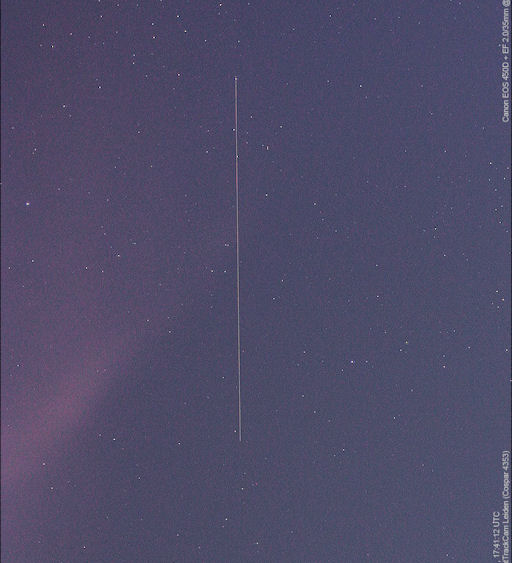

| Visitors Now: | |
| Total Visits: | |
| Total Stories: |

| Story Views | |
| Now: | |
| Last Hour: | |
| Last 24 Hours: | |
| Total: | |
ROSAT Becomes Brighter in Nights Ahead … as it descends to Earth
HERE; Space Weather SATELLITE RE-ENTRY:
The ROSAT X-ray observatory, launched in 1990 by NASA and managed for years by the German Aerospace Center (DLR), will return to Earth within the next two weeks. Current best estimates place the re-entry between Oct. 22nd and 24th over an unknown part of Earth.
Although ROSAT is smaller and less massive than UARS, which grabbed headlines when it re-entered on Sept. 24th, more of ROSAT could reach the planet’s surface. This is because the observatory is made of heat-tolerant materials. According to a DLR study, as many as 30 individual pieces could survive the fires of re-entry. The largest single fragment would likely be the telescope’s mirror, which is very heat resistant and may weigh as much as 1.7 tons.
ROSAT is coming, but it’s not here yet. On Oct. 13th, Marco Langbroek photographed the observatory still in orbit over Leiden, the Netherlands:
Photo details: 5 second exposure, Canon EOS 450D, ISO 400
“I observed ROSAT this evening in deep twilight,” says Langbroek. “It was bright, magnitude +1, and an easy naked-eye object zipping across the sky where the first stars just had become visible.”
Update: Scott Tilley of Roberts Creek, British Columbia, made a video of ROSAT on Oct. 15th: “It did get pretty bright, at least 1st magnitude, as it passed overhead after sunset.”
ROSAT will become even brighter in the nights ahead as it descends toward Earth. Local flyby times may be found on the web or on your smartphone.
Also, check the German ROSAT re-entry page for updates.
The role of space weather: Solar activity has strongly affected ROSAT’s decay. Only a few months ago, experts expected the satellite to re-enter in December. However, they did not anticipate the recent increase in sunspot count. Extreme ultraviolet radiation from sunspots has heated and “puffed up” Earth’s atmosphere, accelerating the rate of orbital decay. The massive observatory now has a date with its home planet in October.



